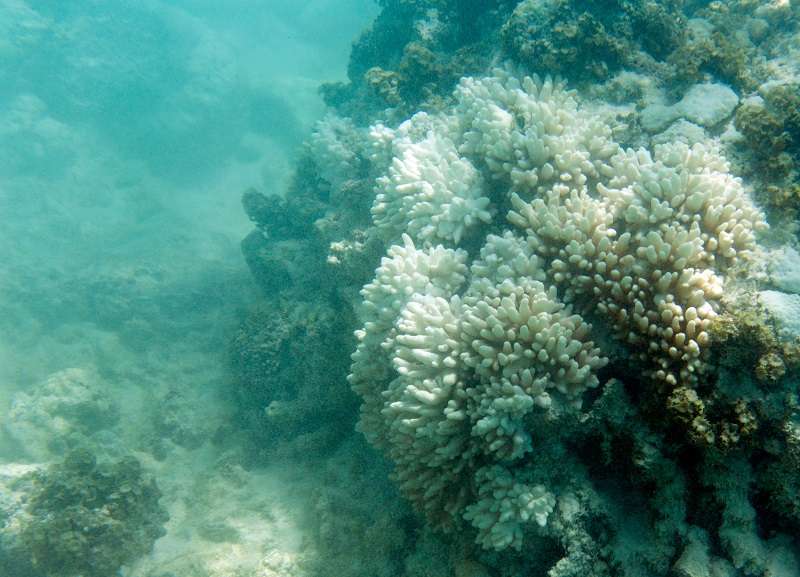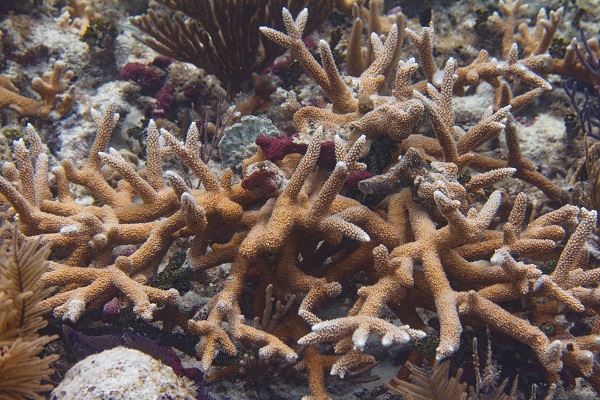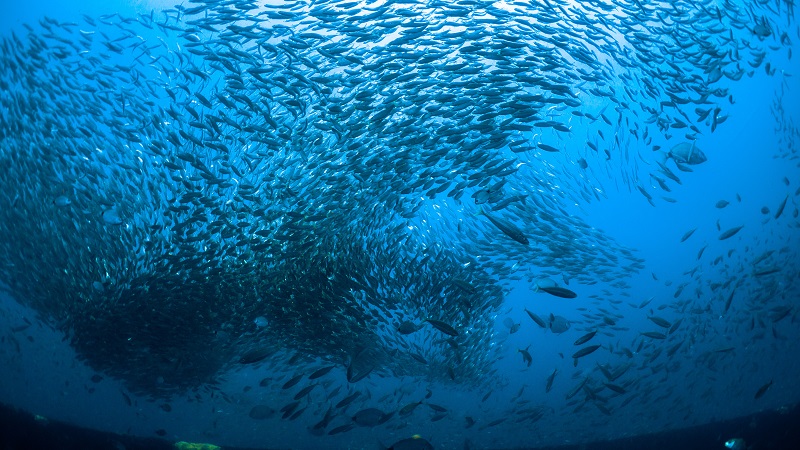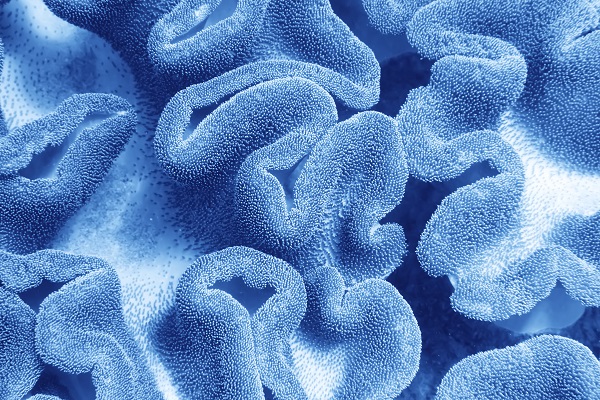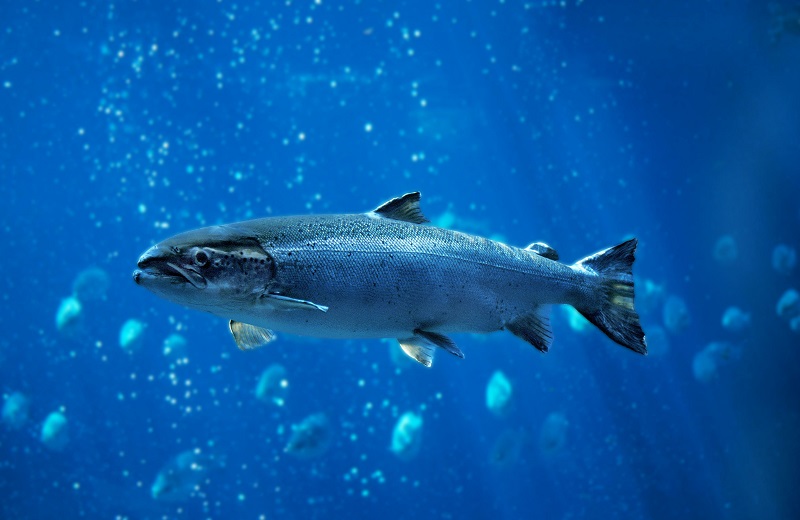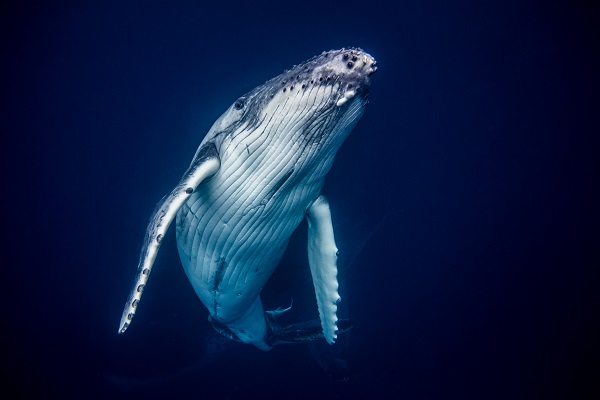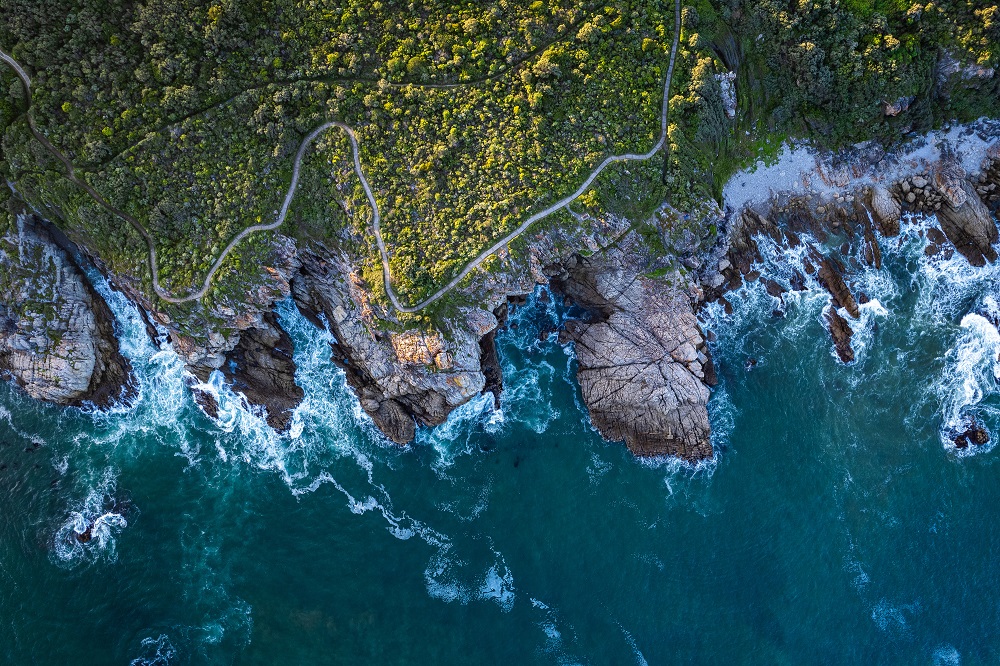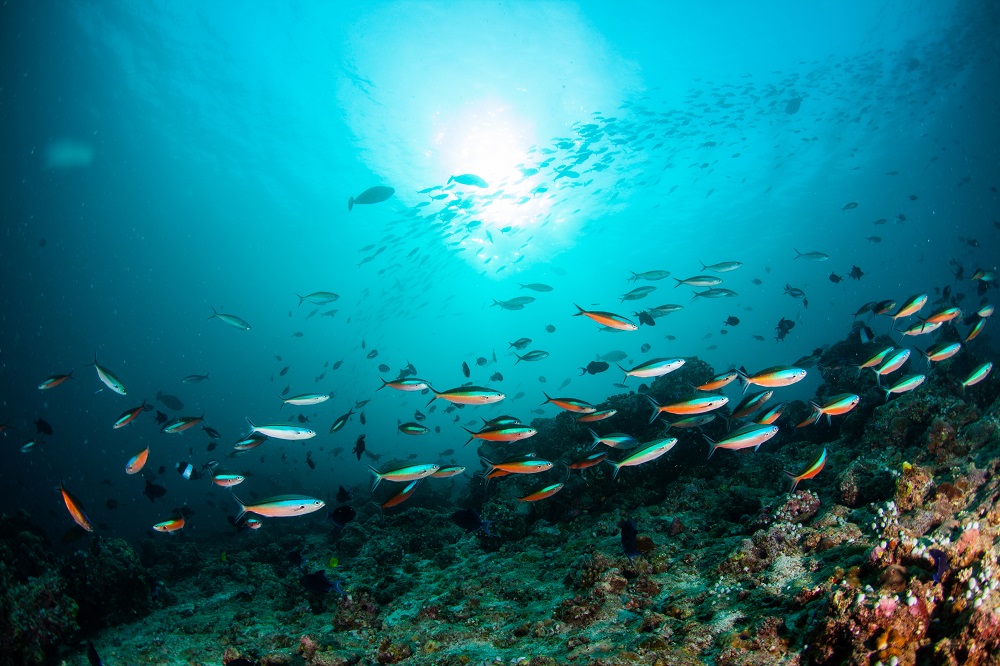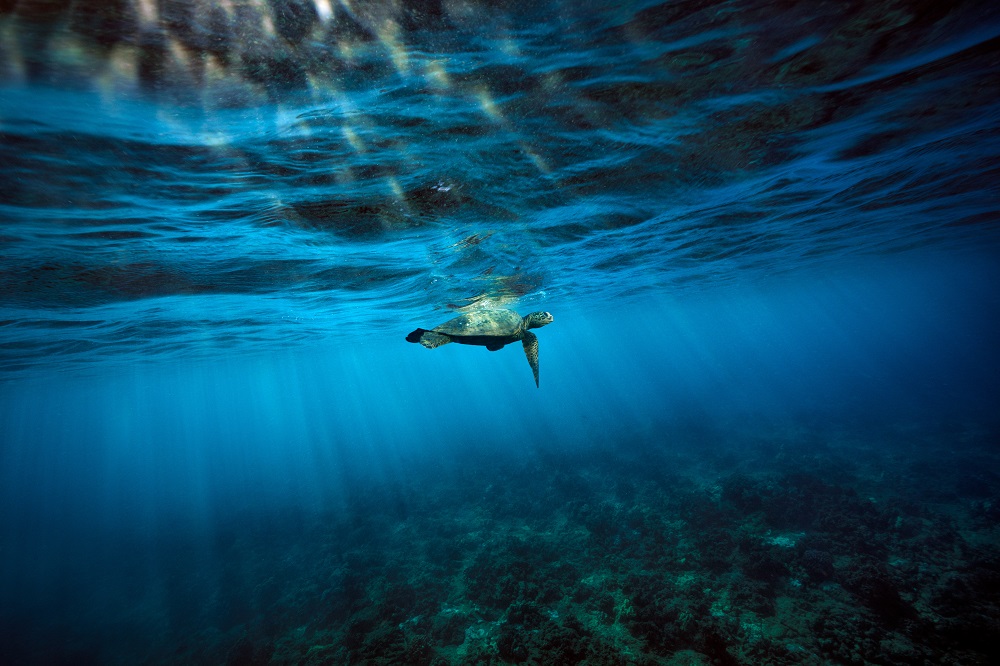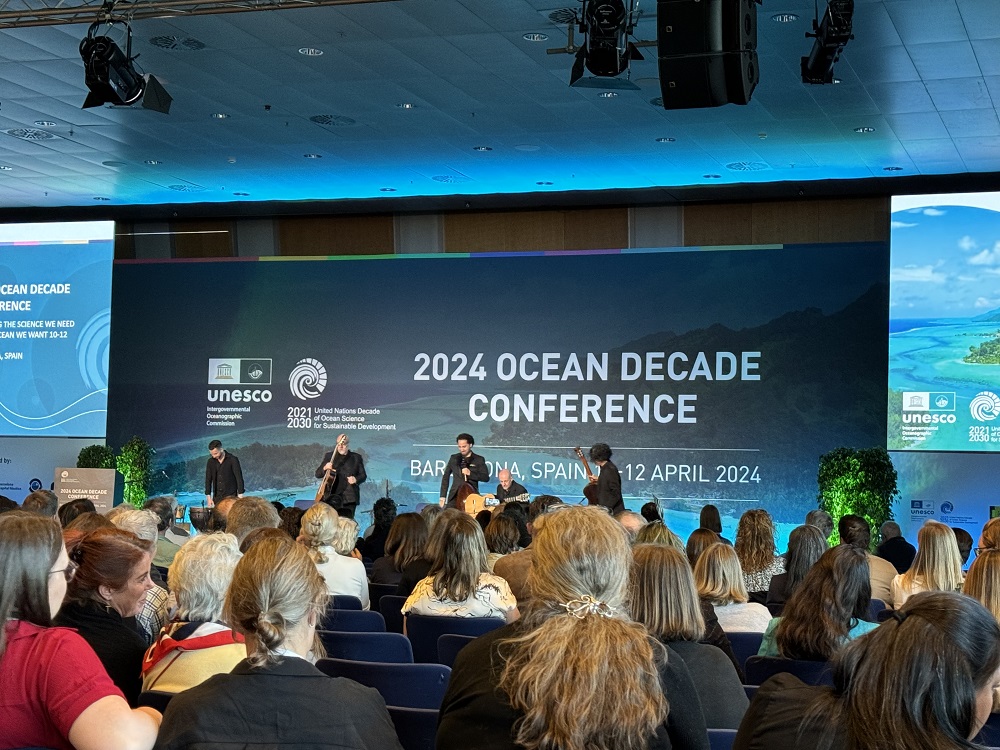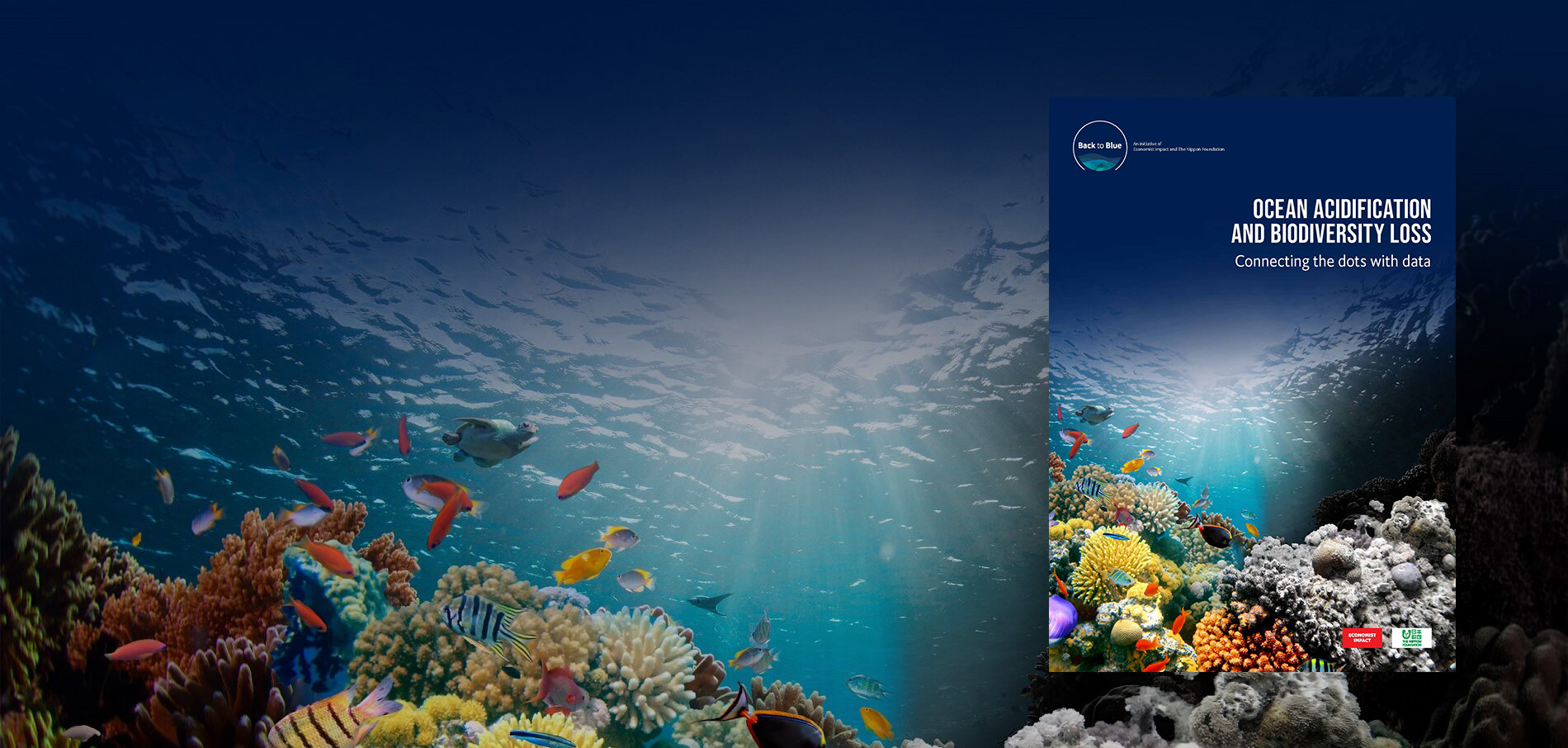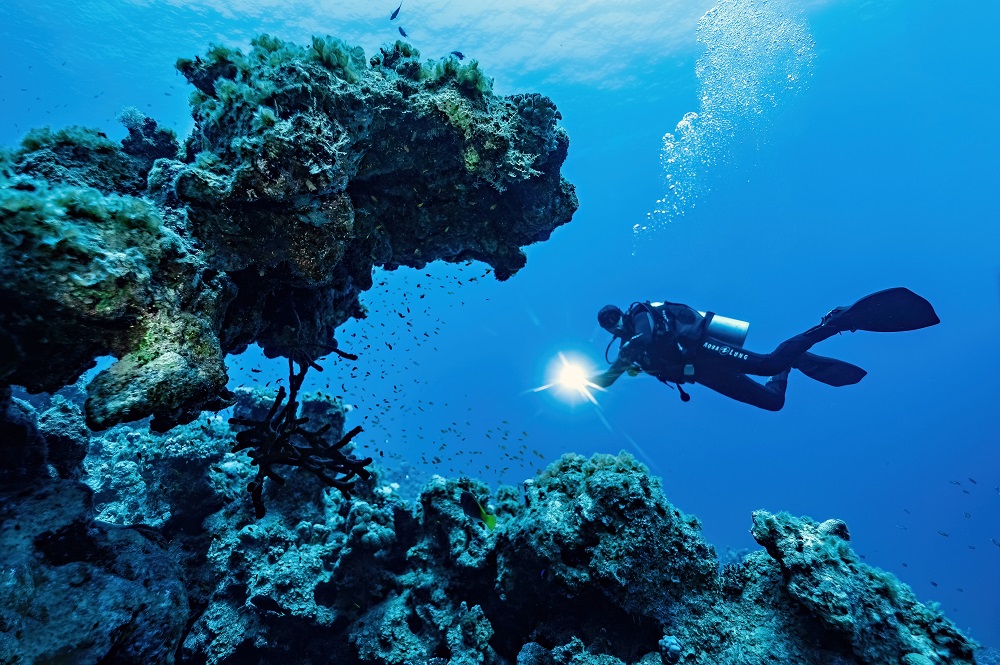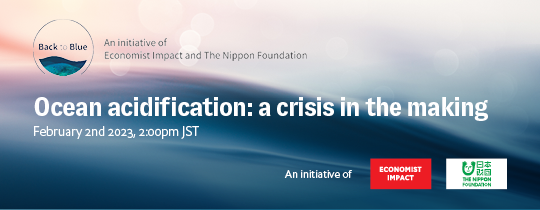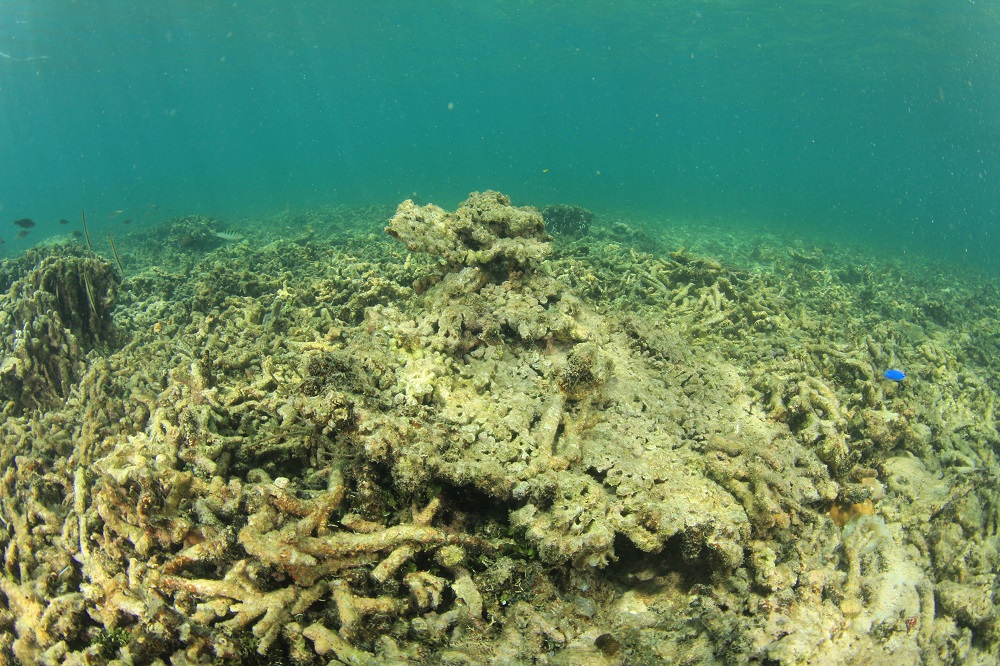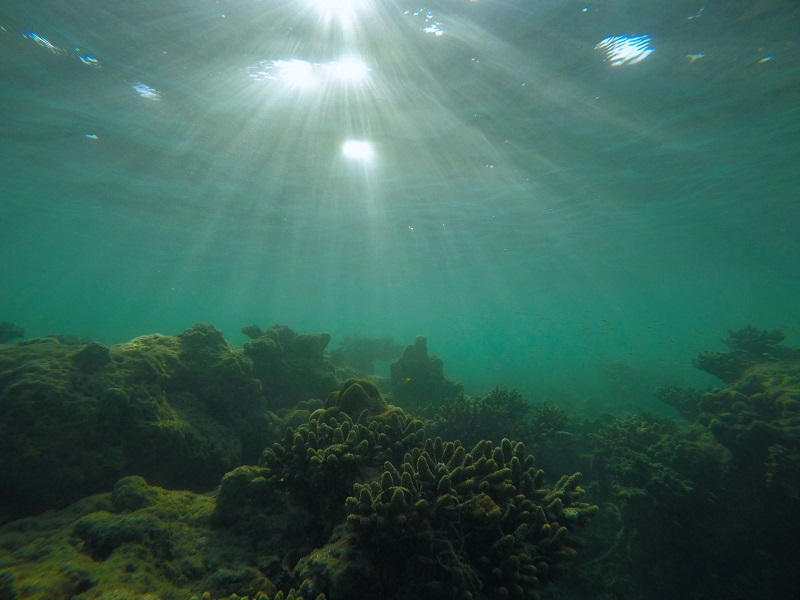Over the past three years, Back to Blue has detailed the growing threat that ocean acidification (OA) poses to marine ecosystems. We have also described how OA contributes to the loss of marine biodiversity, and we’ve highlighted the concerted efforts that scientists, governments, international organisations and individual communities are taking to combat OA.
Ocean health is suffering from more than rising acidity levels, however. Other pressures, most of them resulting from human activity, are bearing down on it. Well-meaning initiatives have been pursued at domestic, regional and international levels to relieve those pressures. But, absent an understanding of how the pressures interact, the adopted policies and other measures have too often proven to be fragmented and thus have had limited effect.
In a series of four articles to be published over the coming months, we will explain—with the help of several experts in the field—the systemic nature of ocean stress and why fragmented, siloed solutions are inadequate to the task of restoring ocean health. This first article addresses the multiplicity of stressors and how they interact.
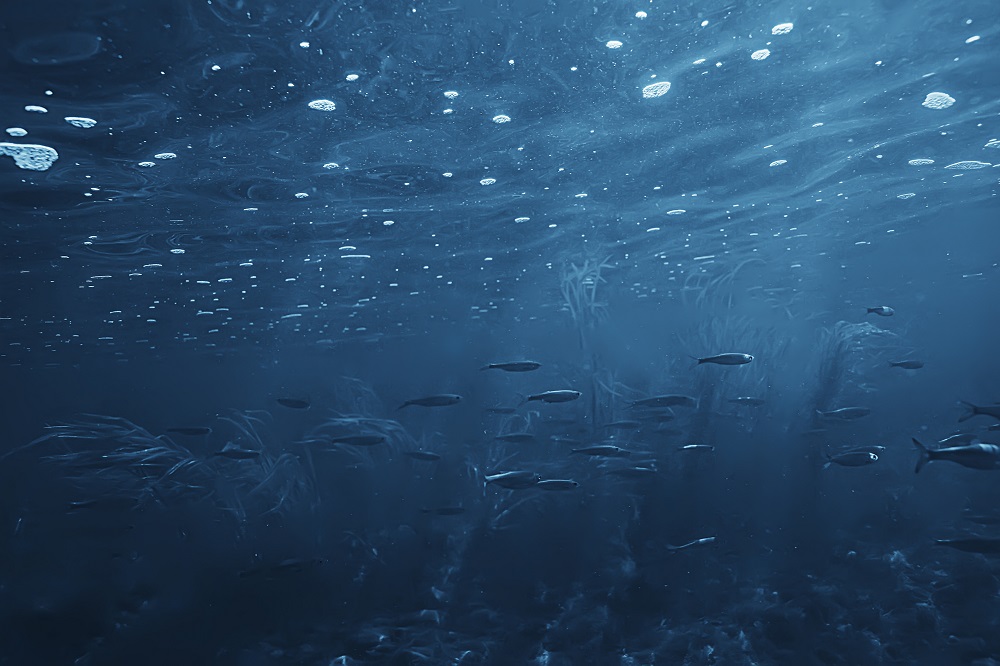
Our planetary boundaries—the safe limits for human pressure on nine critical earth processes—are being crossed at an alarming rate. First proposed by a group of scientists in 2009, the boundaries of six of those processes were deemed to have been crossed by 2023. Now a group of ocean experts believe a seventh, that of ocean acidification (OA), should be added to the list.
The experts’ modelling indicates that, by 2020, average conditions in up to 60% of the sub-surface ocean had crossed the previously set OA boundary, and the same was the case in more than 40% of the surface ocean. “What was considered a ‘safe operating space’ for OA turned out not to be safe at all,” says Helen Findlay, biological oceanographer at Plymouth Marine Laboratory in the UK and one of the paper’s authors.
OA—rising acidity levels in the world’s oceans primarily caused by the absorption of increasing amounts of CO2 from human activities —is making it increasingly difficult for marine organisms to survive and thrive. It is also reducing the ocean’s ability to absorb CO2 emitted by human activities. But it is far from the only threat to ocean health. Its interaction with other harmful processes is raising the peril facing the marine environment to acute levels.
Marine organisms seemingly have nowhere to turn for their survival. But countries, regions and localities, with the support of scientists, are implementing practical measures that promise to ease some of those pressures. In this article, we will detail the variety of ocean stressors and how they interact before highlighting some remedial actions that are being taken now.
A dangerous cocktail
OA’s harmful impact on marine environments is compounded by the effects of another chemical process: deoxygenation. As the atmosphere warms, so does ocean water, depleting its oxygen content. This impairs marine organisms’ physiological and biological processes, often leading the organisms to migrate to less stressful waters. (Ocean warming harms the ocean in other ways, most visibly when it results in coral bleaching of the type that so damages coral reefs.)
“When oxygen depletion interacts with elevated CO2 levels, higher acidity and reduced thermal tolerance, you’ve got a cocktail of physiological stressors that can lead to organisms changing their behaviours and becoming more vulnerable to infection,” explains Steve Widdicombe, director of the Sharjah Marine Science Research Centre in the UAE.
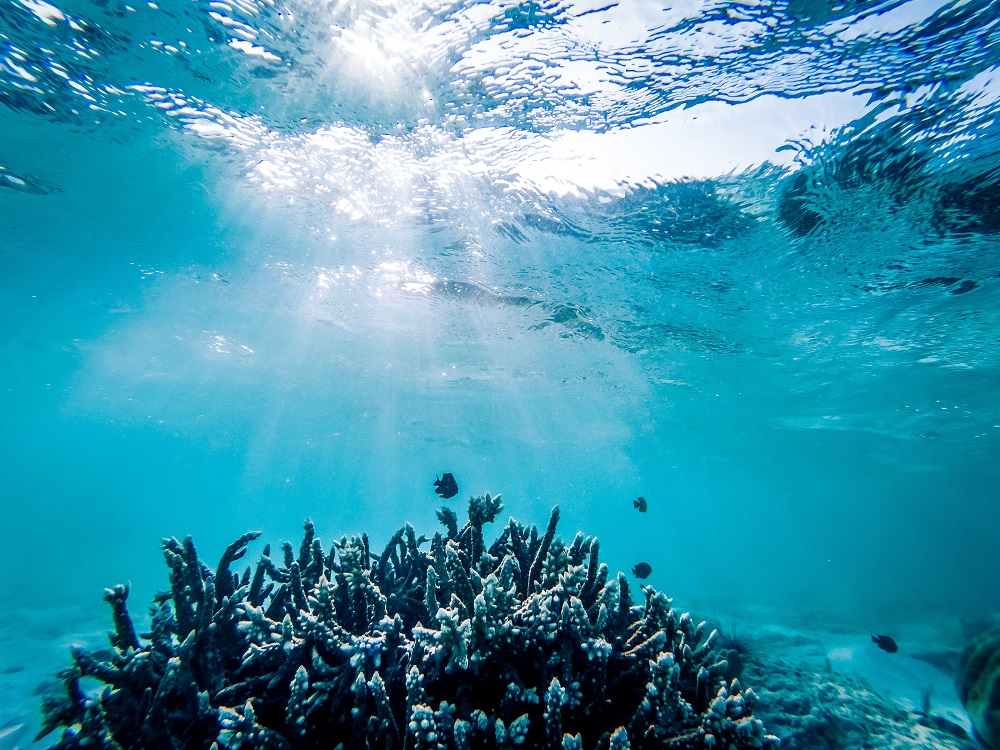
The key link between those stressors is human-generated CO2, points out Carlos Duarte, Ibn Sina distinguished professor of marine science at the King Abdullah University of Science and Technology in Saudi Arabia. “Oxygen and CO2 are intimately linked across the whole biosphere through a long sequence of linked processes,” he says. “Combustion, which releases carbon into the atmosphere, ultimately leads to elevated temperature levels within marine organisms and higher respiratory demands at the same time that oxygen content in many bodies of water is falling. It is the interaction of those stressors that creates the gravest threats to marine life.”
Other processes heap on additional pressure. They include: nutrient run-off from agricultural land, which contributes to deoxygenation; the leakage of raw sewage and chemical pollutants into waterways close to the sea; overfishing, which destabilises marine ecosystems by reducing or removing predators and prey from food chains; and the introduction of invasive species, which can have the same effect as overfishing but can also bring with them diseases and parasites that harm native species.
All of these processes not only cause direct harm to marine organisms, but also contribute to habitat destruction, creating yet more vulnerability for species. “Seaweed, kelp and mangroves, for example, are net sources of oxygen, and they also store carbon,” says Professor Duarte, underscoring how important it is to protect, and where possible to restore, the delicate balance of elements in those ecosystems.
A deficit of understanding
Scientists have long understood how most of the above stressors work in isolation, but the understanding of how they interact is more recent. “That understanding has only become mainstream in the scientific community in the past decade,” says Professor Duarte. It is taking even longer to penetrate policymaking circles. “The Intergovernmental Panel on Climate Change [IPCC], for example, only started mapping those interactions during the work on its last report,” he adds. (The IPCC’s Sixth Assessment Report, its most recent, was published in stages between 2021 and 2023.)
“There is barely any understanding at all at policymaker level of how the different stressors interact,” agrees Professor Findlay. “It’s starting to filter up, but we as scientists need to do much more to communicate the implications of that interaction.”
Understanding how the ocean stressors interact and the implications for ocean health is critical to overcoming the existing policy fragmentation, says Professor Widdicombe. “There are a lot of good programmes in place within governments and at inter-governmental level that address individual sources of ocean stress, but they are too often disconnected,” he says.
In the past decade, for example, several national and state/provincial governments have created OA action plans, backed up by OA-specific legislation, focused on combatting that threat. “Those are important,” says Professor Widdicombe, “but it is becoming clear that a more holistic approach is needed—one that starts from recognition of the interconnected nature of the multiple threats.”
Among its benefits, such an approach could help overcome the fragmentation of efforts at government level to restore ocean health, says Professor Widdicombe. “Initiatives within departments for fisheries management, say, or agriculture or energy or the environment all need to be focused on the same outcome—restoring ocean health. It doesn’t matter which departments have which responsibilities; it’s the outcome that’s important.”
Connecting the disparate efforts is likely to take time. But in the meantime, countries, regions and localities, with the support of scientists, are implementing practical measures that are reducing some of the pressures on marine ecosystems. Some are having success at restoring species and habitats.

Solutions now and for the future
Proactive fisheries management is one solution with a proven track record. Over the past 15 years, for example, populations of Atlantic bluefin tuna and of Pacific bluefin tuna have recovered from near collapse after decades of overfishing, both successes resulting from co-ordinated international efforts.
Species recovery has also resulted from habitat restoration projects. In the United States, more than 100 such projects conducted in the country’s coastal areas since 2009 have led to migratory species such as salmon (including the endangered Atlantic salmon) and herring returning to river estuaries.
“Governments at different levels are starting to understand the connection between proactive fisheries management and restoring marine ecosystem health,” says Professor Widdicombe.
Professor Duarte is convinced that most forms of marine life that are currently in danger can recover, provided remedial actions are taken. “When it comes to large animals, we first saw this with the remarkable recovery of humpback whales following the whaling moratorium in the mid-1980s. And we’ve seen it more recently in the recovery of Pacific elephant seals.”
Professor Duarte is also encouraged by the stabilisation and recovery of mangrove systems at scale in parts of the world, including Vietnam’s Mekong Delta, the Red Sea, the Arabian Gulf and China. “The curves for mangrove decline and sea grass decline are bending,” he says. “If we keep pushing in the right direction, we can really put the oceans on a recovery trajectory.”
Different types of resilience-building projects are helping to produce such successes. Marine protected areas (MPAs) offer one example. These are tracts of coastal waters set aside by governments to protect marine species and habitats. There are more than 16,000 MPAs in existence worldwide, covering almost 10% of the global ocean.
MPAs play an important role in ocean conservation, but they could be made more effective, says Professor Widdicombe. “More needs to be done by governments to keep them truly protected. Many allow commercial fishing, for instance.”
Blue-carbon habitats offer a nature-based approach to drawing CO2 from the atmosphere and storing it away in mangroves, tidal marshes, sea grass, kelp forests and sediment. They also provide valuable adaptation benefits by contributing to coastal protection and fisheries recovery. Governments support such ecosystems in a number of ways, such as by funding programmes to replant mangroves and restore tidal marshes and by including them in MPAs.
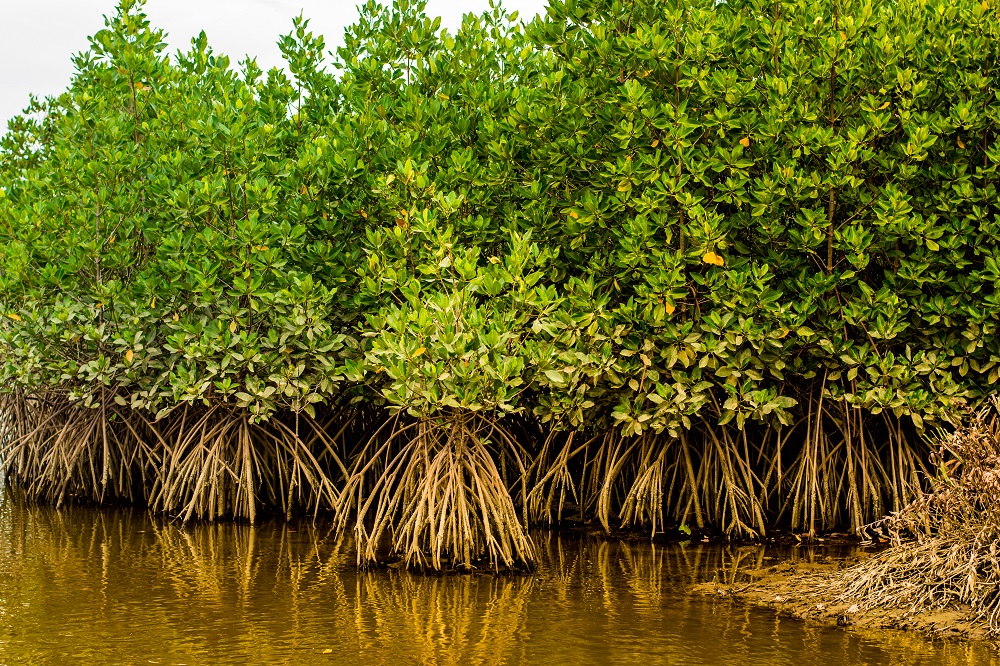
“While blue-carbon habitats are widespread globally, there is enormous scope for expanding their coverage and increasing the amount of CO2 they take out of the atmosphere,” insists Professor Duarte. This would require large-scale funding beyond the amount governments currently provide; he advocates treating blue carbon as a financial asset class to help attract the required investment.
Like most approaches to climate mitigation, blue-carbon strategies involve a degree of risk. Arguably the biggest one is the potential release of stored CO2 when such habitats are damaged or destroyed. Advocates such as Professor Duarte acknowledge these risks but believe the bigger danger lies in delaying the scaling of such solutions. “At some point, we won’t be able to move fast enough to counteract rising emissions,” he says.
Professor Findlay is one expert who wonders whether such solutions can be done safely at scale, but she agrees that emissions is the right target to focus on. “We should be working to develop these solutions, but without any doubt, the most impactful solution of all is to radically reduce carbon emissions.”
EXPLORE MORE CONTENT ABOUT THE OCEAN
Back to Blue is an initiative of Economist Impact and The Nippon Foundation
Back to Blue explores evidence-based approaches and solutions to the pressing issues faced by the ocean, to restoring ocean health and promoting sustainability. Sign up to our monthly Back to Blue newsletter to keep updated with the latest news, research and events from Back to Blue and Economist Impact.
The Economist Group is a global organisation and operates a strict privacy policy around the world.
Please see our privacy policy here.
THANK YOU
Thank you for your interest in Back to Blue, please feel free to explore our content.
CONTACT THE BACK TO BLUE TEAM
If you would like to co-design the Back to Blue roadmap or have feedback on content, events, editorial or media-related feedback, please fill out the form below. Thank you.
The Economist Group is a global organisation and operates a strict privacy policy around the world.
Please see our privacy policy here.




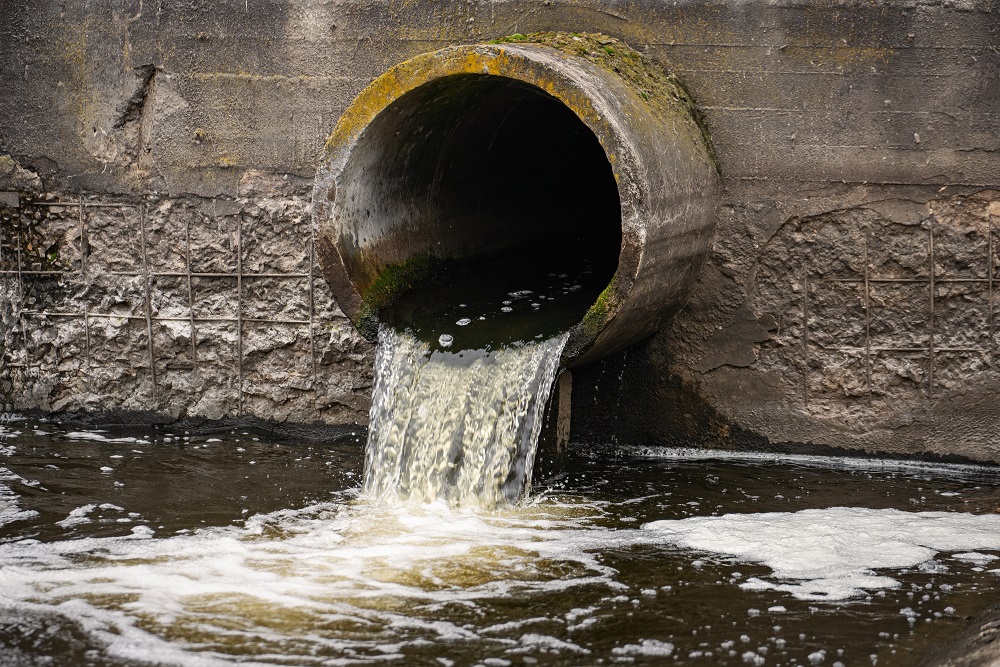 The scourge of untreated wastewater
The scourge of untreated wastewater Slowing
the chemical tide: safeguarding human and ocean health amid
chemical pollution
Slowing
the chemical tide: safeguarding human and ocean health amid
chemical pollution Hazardous chemicals in plastics - the discussions at INC
Hazardous chemicals in plastics - the discussions at INC







